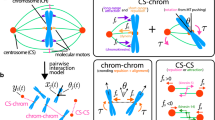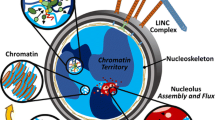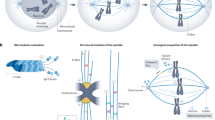Summary
-
1)
The action of two indifferent centres of force through a medium produces the same »crossed« or »antispindle« figure as two »like« centres of a dual force, such a electricity or magnetism.
-
2)
Forces of attraction of osmosis and diffusion, etc., behave to one another as »like« forces, and the same holds good for similar forces of repulsion; but a centre of attraction combined with a centre of repulsion will produce a spindle figure in a field through which the force is transmitted.
-
3)
As the forces of diffusion are of »like« kinds at the two centres of a dividing cell, it is clear that their action cannot be transmitted through the cell, nor can it produce the spindle figure.
-
4)
Rhumbler's model network pulled through two holes in its support gives the »crossed field« in its meshes so far as their size and structure allow: the appearance of a very narrow spindle along the axis depends on the structure of the meshes and corresponds to nothing seen in the cell under our microscopes.
-
5)
The existence of triasters (i. e. of three consecutive centres joined up by cytoplasmic spindles) is no argument against the explanation of the cytoplasmic figure by a »dual« force: since the triaster can be reproduced by magnetic and by electrostatic models.
Zusammenfassung
-
1)
Die Wirkung zweier indifferenter Kraftzentren durch ein Medium bringt die »gekreuzten« oder »Gegenspindel«-Figuren hervor, so z. B. zwei gleichnamige Zentren zweipoliger Kräfte, wie Elektrizität und Magnetismus.
-
2)
Anziehungskräfte aus osmotischer Diffusion usw. verhalten sich zueinander wie gleichnamige Pole und dasselbe gilt von ähnlichen absto\enden Kräften; ein Anziehungs- und ein Absto\ungszentrum kombiniert bringen aber eine Spindelfigur in einem Felde hervor, durch welches die Kraft hindurchwirkt.
-
3)
Da die Diffusionskräfte an den beiden Zentren einer sich teilenden Zelle »gleichnamig« sind, so ist klar, da\ ihre Wirkung nicht durch die Zelle hindurchgehen, noch die Spindelfigur hervorbringen kann.
-
4)
Rhumblers Modellnetzwerk, durch zwei Löcher der Unterlage hindurchgetrieben, ergibt das »gekreuzte Feld« in seinen Maschen, soweit deren Grö\e und Struktur das erlauben: Das Auftreten einer sehr kleinen Spindel entlang der Achse hängt von der Struktur der Maschen ab und entspricht nicht dem, was man in der Zelle unter dem Mikroskop sieht.
-
5)
Die Existenz von Triastern (d. h. von drei aufeinander folgenden Zentren, welche durch cytoplasmatische Spindeln verbunden sind) ist kein Gegengrund gegen die Erklärung der Cytoplasmafigur durch eine zweipolige Kraft, da der Triaster durch magnetische und elektrostatische Modelle erzeugbar ist.
Similar content being viewed by others
Author information
Authors and Affiliations
Rights and permissions
About this article
Cite this article
Hartog, M. The strain-figures of »like« poles, and Rhumbler's »gummiring-modell« in relation to the cytoplasmic spindle. Archiv für Entwicklungsmechanik der Organismen 19, 79–84 (1905). https://doi.org/10.1007/BF02162202
Received:
Issue Date:
DOI: https://doi.org/10.1007/BF02162202




